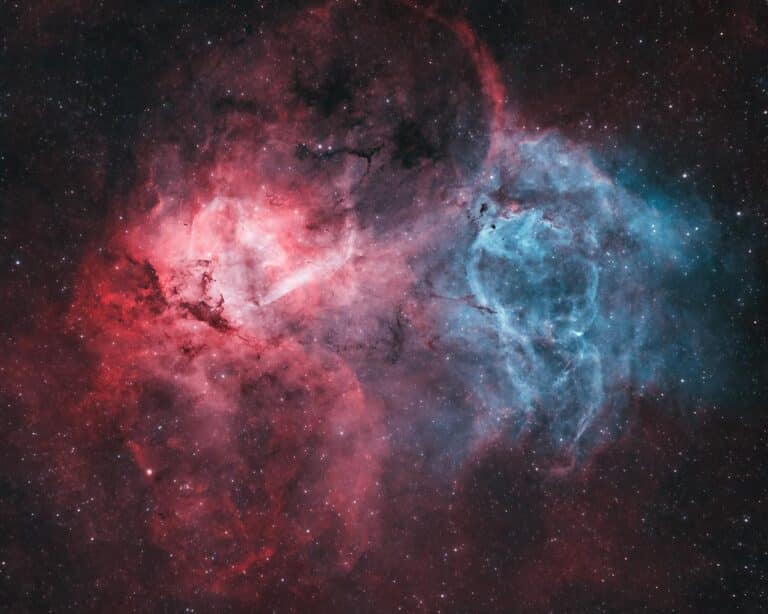AVAO wrote: ↑Sat Dec 09, 2023 7:11 am
ASTROBIN picture of the day 09.12.2023 - SNR G107.5-5.2 - The Largest Supernova Remnant EVER Discovered by Amateurs
Marcel Drechsler, Bray Falls, Yann Sainty. Nicolas Martino
|
2023 Dez 09
THE NEREIDES NEBULA: 3559 FRAMES, 260 HOURS OF EXPOSURE TIME, TELESCOPES ON THREE CONTINENTS
and one mission - not just to explore a supernova remnant previously undiscovered by science, but to shoot it in an ambitious collaborative project.
We recommend viewing the image at 100% in order not to miss the numerous fine details.
SNR G107.5-5.2, with its many dynamic and delicate bluish filaments, appeared to us like the mythical sea nymphs dancing exuberantly in the water, and the connection to the constellation of Cassiopeia is also obvious: Thus Cassiopeia was a queen known for her exaggerated beauty. She was the wife of King Cepheus and the mother of Andromeda. Cassiopeia once boasted that she and her daughter were more beautiful than the Nereides. This angered the sea nymphs and as punishment they sent the monster Cetus to destroy the kingdom.
The story on youtube:
https://www.youtube.com/watch?v=l6DNU5K_jMM
Full resolution images:
https://www.astrobin.com/towmdb
..the whole story in great details...
TY4YA Jac
That's fascinating, Jac!
I get the impression that the the Nereides Nebula is a quite old supernova remnant, since it is so large and faint. It looked like barely a smudge in the OIII image by Bray Falls. My amateur impression is that it must be more distant and thus larger than the Veil Nebula, which is equally large in the sky. But the Veil Nebula is very bright.
This Bray Falls HOO image fascinated me, and I tried to match the HOO data to the RGB versions of the nebulas in this region:
Near bottom right is a bicolor pink and blue nebula that I don't recognize. It turned out to be the Lion Nebula, or Sharpless 132. But why is it so sharply divided into pink and blue halves?
The pink part of the nebula contains a mighty WR star, WR 153 or HD HD 211853. It's a binary star, and Simbad Astronomical Database describes its spectral type as WN6o+O6I C. I don't know what the lowercase "o" after WN6 means, and I don't know what the capital C means at the end, but in any case, this sounds like an incredibly powerful star. I'm not surprised that it ionizes a pink emission nebula.
But what the .... is the blue part of the nebula? The blue color corresponds to OIII emission, which represents a higher degree of ionization than Hα. My software showed nothing out of the ordinary in this part of the nebula, but
this entry from Astro Backyard told me about a Wolf-Rayet star, HD 211564, in this part of the nebula. The spectral class of HD 211564 is WN3(h)-w C, according to Simbad.
According to
Wikipedia, the WNh stars are much more massive and much more luminous than "ordinary" WN stars. So if HD 211564 really is a WN3h star, it should be extremely massive and bright. In any case, it appears to be very hot, some 85,000 K.
So I guess it is HD 211564 that creates the remarkable OIII part of the Lion Nebula!
Ann

